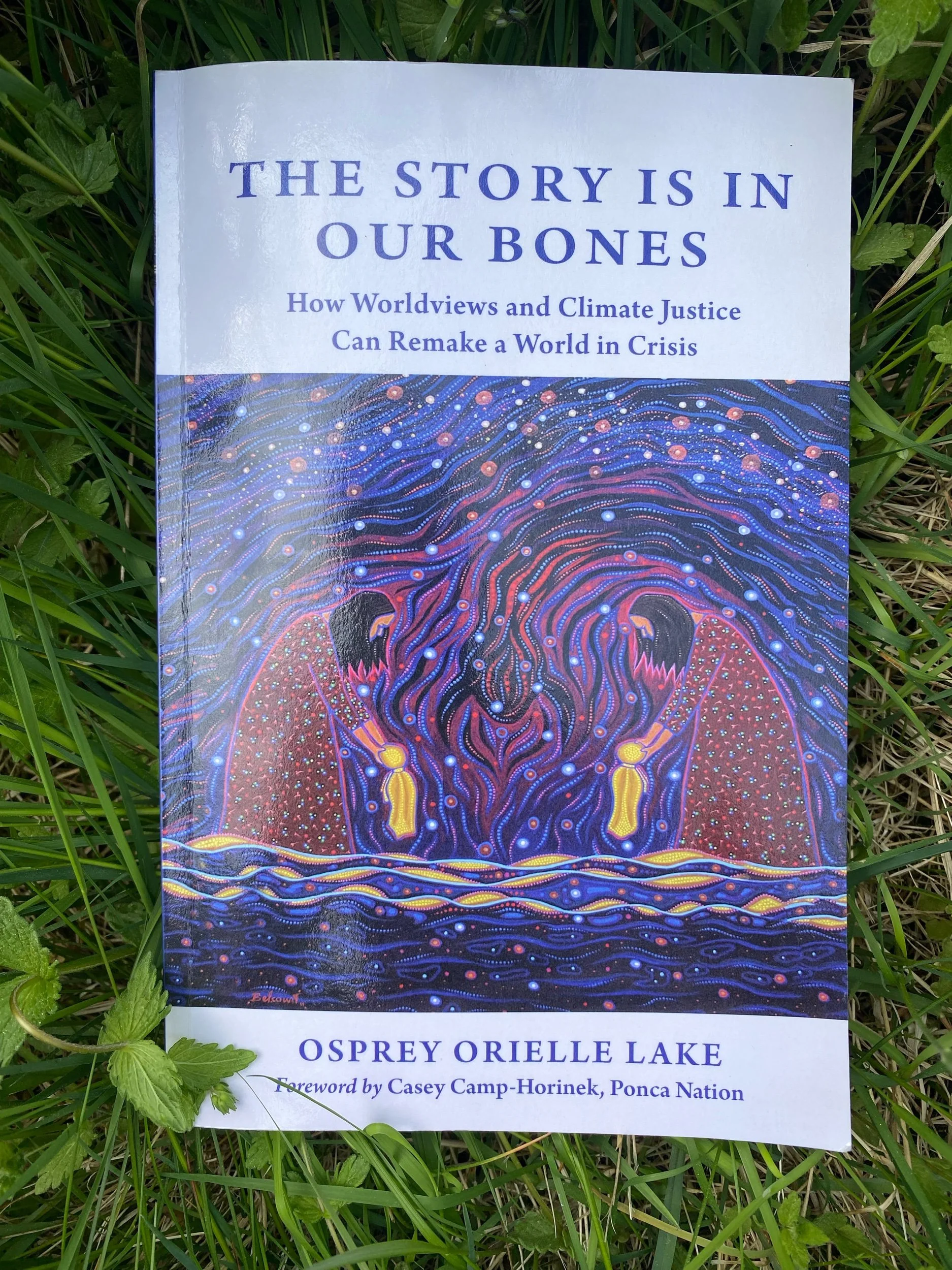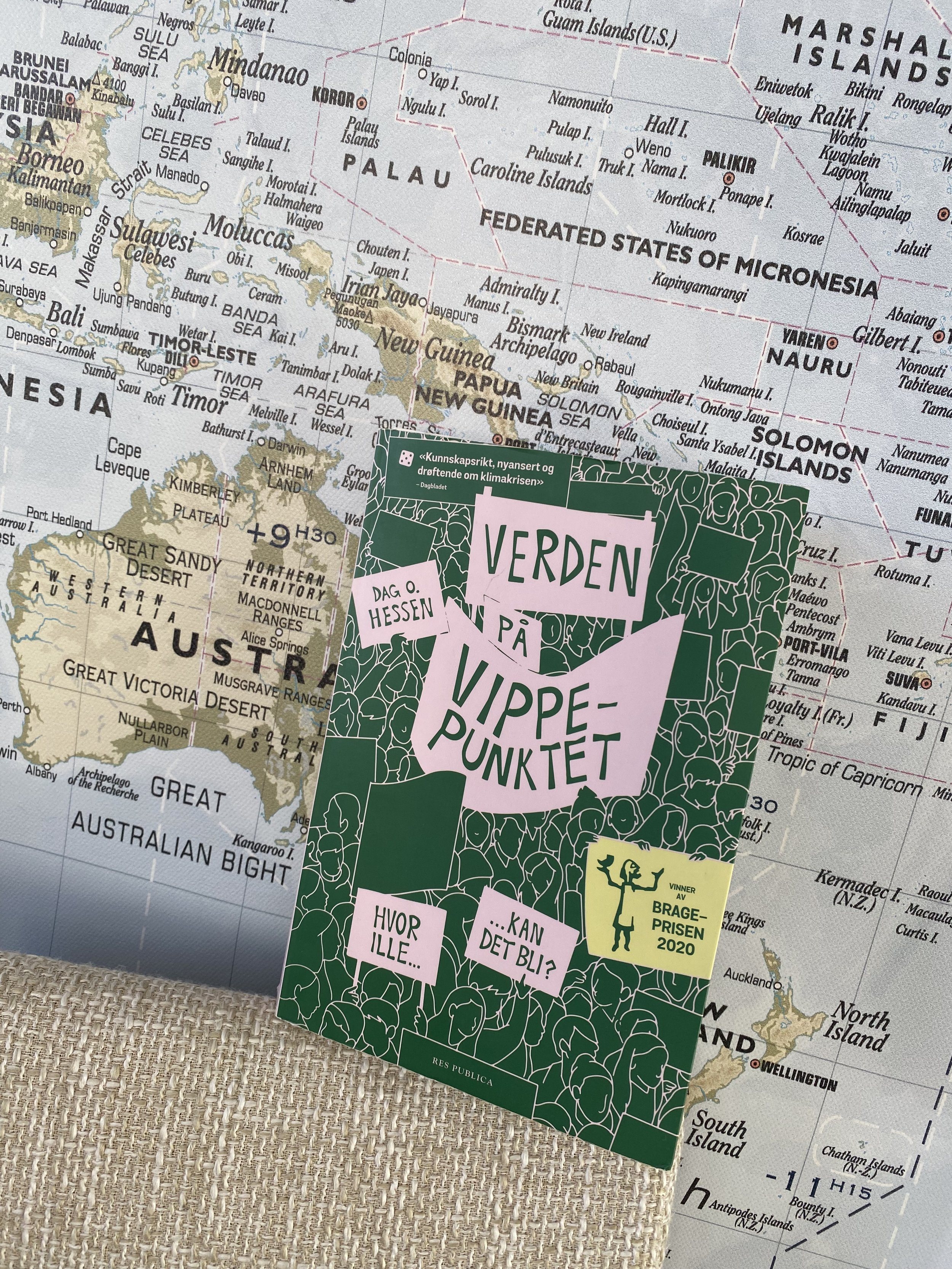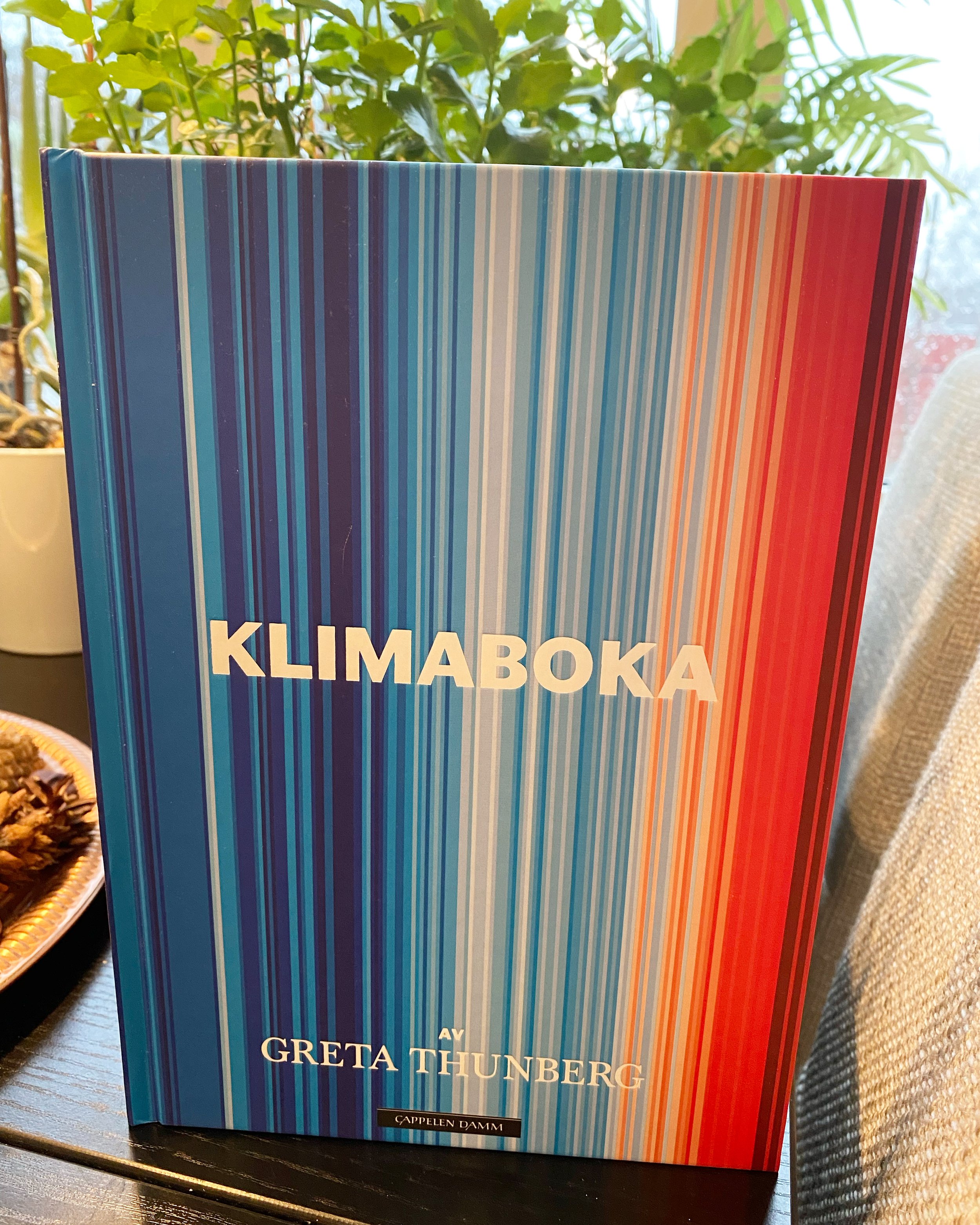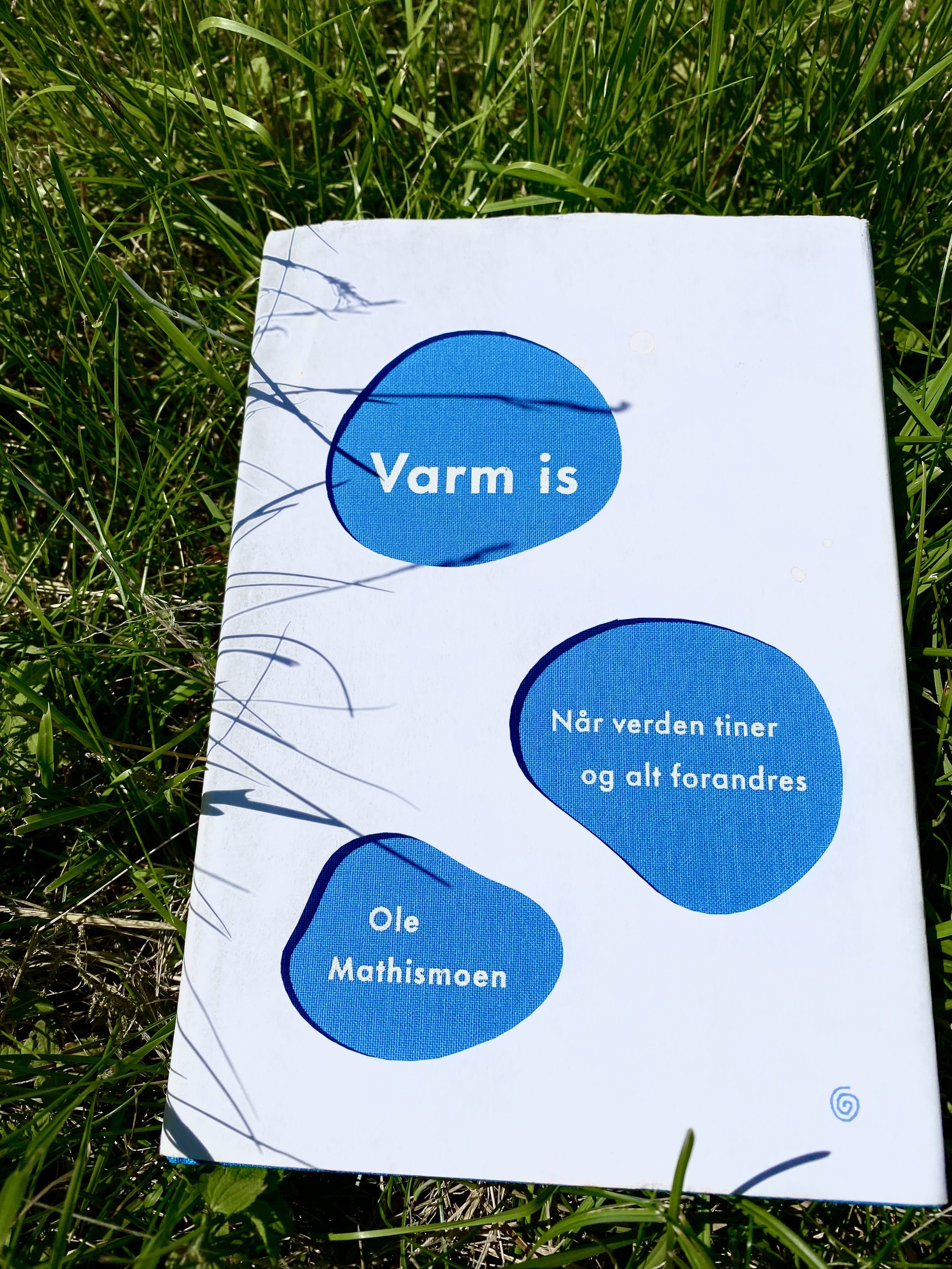Environmental book recommendation of ‘Det vi tenker på når vi prøver å ikke tenke på global oppvarming’ (What we think about when we try not to think about global warming) by Per Espen Stoknes
I must begin with saying that I am happy that this book recommendation can not do justice to reading the book yourself - and that’s a really good thing! Because this is actually, as the book says on the back 'The most important book of the year!'.
The author of the book, Per Espen Stoknes, is both a psychologist and economist, and in this book he presents us with the five key psychological mechanisms that prevents us from acting on climate change. Luckily, he also provides us with new strategies about how we should talk about climate change, and also how detrimental some of the communication around climate change can be.
There are three main parts of the book: ‘Thinking’, ‘Doing’ and ‘Being’. In ‘Thinking’, the book starts of by thoroughly describing why there are climate deniers and sceptics to climate science. The key findings in this chapter, and also why there are psychological barriers towards climate action is summed up in:
- 1.Distance - the climate cause feels distant to us, ‘it doesn't concern me, yet’.
- 2.Doomsday - with impending doom soon on your hands, it’s easy to feel defeated.
- 3.Dissonance - when we know that the use of fossil fuels amplifies climate change, but we continue to drive our petrol based cars, it can create a dissonance that is uncomfortable to handle. This dissonance is relieved by starting to doubt or trivialise the facts (that our lifestyle created the problem)
- 4.Denial - when we deny the facts, we use it as a tactic to protect ourselves from fear or guilt. By denying climate change altogether, it is easier to lift yourself to the same level as those ‘preaching’ climate facts to you, and rather ridicule them, as a mean of self defence.
- 5.Identity - we look for information that confirms our personal and political values and beliefs, and when the political side you identifies with either express that they believe or do not believe in climate change, it is easier for you to let your cultural identity belief be mirrored, than opposing this.
However - there are good ways to combat these identified traits to why some denies climate change, and these tactics are described in part 2 - ‘Doing’. The main message here stars of with: Turn the barriers upside down -
- Find a way to make climate change feel close, human, personal and urgent (the opposite from distance).
- Use supportive framing that does not evoke negative emotions (doomsday).
- Create opportunities for a simple and visible climate action (reduces dissonance)
- Avoid emotions as fear, guilt, and the need for self protection (reduces the need for denial)
- Reduce the cultural and political polarising of climate change (to reduce the need to protect your identity)
From a climate communication perspective, which is my daytime job, this information is golden! Knowing how to not create a ‘them and us’ worldview is vital information when the goal is for climate science to be globally accepted.
The two main remaining aspect of this first strategy also includes:
- Stick to the positive strategies - whatever we communicate about the climate - the message should be inspiring, sympathetic, and stimulate to togetherness. A solution works so much better when people actually wants it, rather than having it implemented by guilt or fear of repercussions.
- Act as a global citizen, not as a individual - we get further when we act towards societal change, rather than as separate individuals. That being said, we do need those individual acts, as recycling, but it’s when more people join in that a movement is created.
Based on this, the book presents us with five new strategies to present climate change:
- Social - use the power of social networks. The best communicators for an idea is someone you look up to or identify with, be it a cultural influencer or a celebrity. This strategy has been successfully used in AIDS campaigns in South-Africa and anti smoking campaigns in the US. The same logic can be applied in communication climate science. In already established communities as sports clubs, organisations etc - find out who different communities looks up to, and let them be spokespeople to their own communities.
- Supportive - use lingual framing that supports the message with positive feelings. Talk about the opportunities to a better life, innovation and job opportunities. Talk about how it promotes better health and wellbeing, how it is better to be prepared and ready for the risk of climate, than staying passive. Talk about it as values for our joint cause.
- Simple - make it simple and practical to act climate friendly. Use ‘green nudges’ as means to making the green choice the simplest.
- Story-based - use the force of stories to create meaning and togetherness. We need the vision of how the green future will look like, therefore - tell better climate stories. Avoid the apocalyptic narrative and rather talk about green growth, happiness and the good life, ecological restoration and nature ethics. Also, when you tell the stories, make them personal, personified and concrete. Give them life and make them extraordinary. Visualise, don’t explain. Make them fun and vibrant with a strong narrative and use of emotions and drama.
- Signals - use social indicators that visualise society respons to the climate crisis. Integrate the climate communication with new progress as indicators as towards green growth.
All in all, this is a very optimistic book, and with fear of that this blog post is going to be too long, I will refrain from covering part 3 ‘Being’. I will just say this, you want to read this book, as it provides you with a lot more visuals and examples than I could cover in this brief overview of what the book contain of ideas.
While reading it, and after, I have felt a renewed hope in communicating climate science. If Stoknes aim for this book was to spread hope around our joint climate, I will definitely say that he succeeded. 10 out of 10, I can strongly recommend this book to anyone interested in climate, psychology, even economics or communication.
Thank you for reading this longer than usual blogpost, and remember to talk positively when communicating about the climate.




















